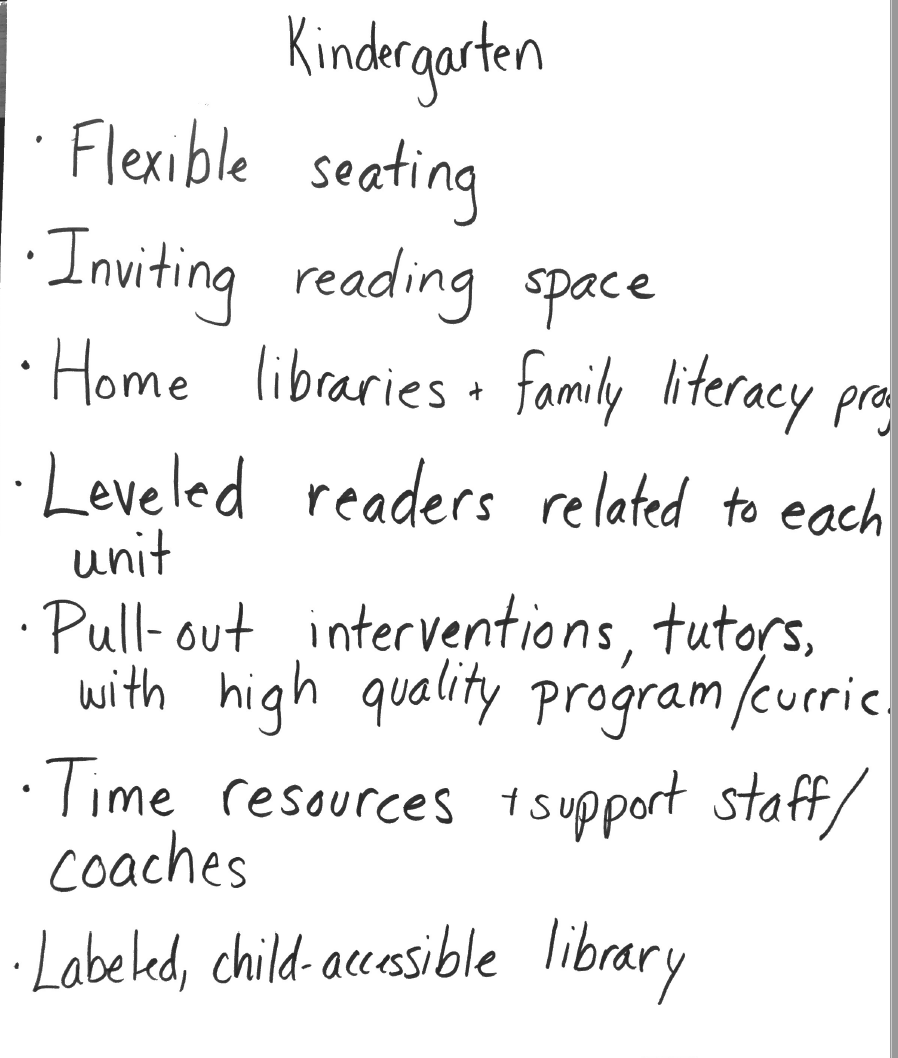Superintendent’s Proposed Budget Presentation, April 25, 2016 5 present, Mr. Gendron absent.There have been many reports that this budget season is going to be a tight one. Although the City has committed to increasing their contribution by $1 million, the school department had recently floated a budget total with an additional $1 million deficit gap.Dr. Khelfaoui was on record as against making up the $1 million deficit through cuts to classroom teaching staff (link to Lowell Sun Article). Most of the reductions proposed are achieved through retirements and some through combining programs. Mr. Frisch who is LPS' Chief Financial Officer, cautions that this budget leaves no room for salary increases in 2017.Budgeting and Finance BasicsSeveral terms - and the source of funding - were explained by both Dr. Khelfaoui and Mr. Frisch as they introduced the budget document (link at end). For clarity, I’m including parts of that discussion here.Foundation Enrollment: the number of students attending public school in the district on October 1 of the previous year. The enrollment figure for the 2017 budget is based on the October 1, 2015 headcount.Foundation Budget: the amount of money or minimum budget a community is required to spend to ensure a quality education. This is based on the October 1 enrollment from the previous year times the per pupil spending amount, again determined by the Commonwealth.Required Local Contribution: The amount that the community is expected to contribute to the budget. It is determined through CASH + IN KIND services. In Lowell “in kind” services are such things as technology services (ex: payroll, purchasing) and maintenance (ex: plowing)Chapter 70 Aid: This is a dollar amount determined by the Commonwealth and is based on a formula that takes into consideration the financial wealth of a community. The actual amount will be an unknown until the Commonwealth’s 2017 budget is set.The DESE website holds more detail on all school financial terms and calculations.Simply stated, the formula for the School’s Budget is:Chapter 70 Aid + Required Local Contribution = Required Net School SpendingOctober 1 is a significant date in all things education. It is the date on which a school’s headcount is taken (this has been true throughout the 30 years I taught), and it is a significant date for determining not only the minimum budget for a public school district, but also is the basis for charter school assessments (once the headcount is taken in October and the money stays at the school/district no matter where that student may transfer beginning on October 2). NumbersI am certainly a novice at this, but it seems that if you enjoyed algebra and dealing with unknown variables, you will most likely enjoy budgeting for a school system. The state contribution through Chapter 70 will be an unknown until the Commonwealth’s budget is in place, the “in kind” portion of the City’s contribution can be estimated, can’t be determined until all of those costs have been tallied (example: how much will plowing out schoolyards in 2016-2017 cost?). Hence, the back-and-forth between City and School Departments.The proposed budget from the Superintendent looks like this:
5 present, Mr. Gendron absent.There have been many reports that this budget season is going to be a tight one. Although the City has committed to increasing their contribution by $1 million, the school department had recently floated a budget total with an additional $1 million deficit gap.Dr. Khelfaoui was on record as against making up the $1 million deficit through cuts to classroom teaching staff (link to Lowell Sun Article). Most of the reductions proposed are achieved through retirements and some through combining programs. Mr. Frisch who is LPS' Chief Financial Officer, cautions that this budget leaves no room for salary increases in 2017.Budgeting and Finance BasicsSeveral terms - and the source of funding - were explained by both Dr. Khelfaoui and Mr. Frisch as they introduced the budget document (link at end). For clarity, I’m including parts of that discussion here.Foundation Enrollment: the number of students attending public school in the district on October 1 of the previous year. The enrollment figure for the 2017 budget is based on the October 1, 2015 headcount.Foundation Budget: the amount of money or minimum budget a community is required to spend to ensure a quality education. This is based on the October 1 enrollment from the previous year times the per pupil spending amount, again determined by the Commonwealth.Required Local Contribution: The amount that the community is expected to contribute to the budget. It is determined through CASH + IN KIND services. In Lowell “in kind” services are such things as technology services (ex: payroll, purchasing) and maintenance (ex: plowing)Chapter 70 Aid: This is a dollar amount determined by the Commonwealth and is based on a formula that takes into consideration the financial wealth of a community. The actual amount will be an unknown until the Commonwealth’s 2017 budget is set.The DESE website holds more detail on all school financial terms and calculations.Simply stated, the formula for the School’s Budget is:Chapter 70 Aid + Required Local Contribution = Required Net School SpendingOctober 1 is a significant date in all things education. It is the date on which a school’s headcount is taken (this has been true throughout the 30 years I taught), and it is a significant date for determining not only the minimum budget for a public school district, but also is the basis for charter school assessments (once the headcount is taken in October and the money stays at the school/district no matter where that student may transfer beginning on October 2). NumbersI am certainly a novice at this, but it seems that if you enjoyed algebra and dealing with unknown variables, you will most likely enjoy budgeting for a school system. The state contribution through Chapter 70 will be an unknown until the Commonwealth’s budget is in place, the “in kind” portion of the City’s contribution can be estimated, can’t be determined until all of those costs have been tallied (example: how much will plowing out schoolyards in 2016-2017 cost?). Hence, the back-and-forth between City and School Departments.The proposed budget from the Superintendent looks like this:
- Foundation enrollment 15,616 students
- Times per pupil amount from State*
- Equals Foundation Budget for 2017 $183,238,362
- Foundation Budget for 2017 $183,238,362
- Less Chapter 70 aid (preliminary, best estimate to date) $138,588,381
- Required City Contribution $ 44,649,981
The City contribution is an approximately $1.5 million increase over the 2016 budget.And now to break out the $44,649,981, because that City Contribution consists of both CASH and IN-KIND contributions. The cost of transportation is broken out separately. For 2017 budgeting, that amount is listed at $7,819,660. City Manager Murphy has committed to a $1 million increase in cash contribution over last year’s cash contribution, making that cash amount $19,856,851. Breaking away the transportation costs from the cash contribution yields an actual cash contribution of $12,037,191. So,
- City’s Cash Contribution $ 19,856,851
- Less Transportation $ 7,891,660
- Net Cash Contribution $ 12,037,191
From here, the City contributes indirectly (in-kind services mentioned above) to a minimum amount of $44,649,981. Those in-kind services could be set higher or end up being more money, but the requirement under state finance is that the City’s contribution is, for now, at least $44,649,981.When the City exceeds school spending, as it did last year, that’s fine; but when the City does not, the underfunded amount rolls over onto the next year’s contribution. Manager Murphy appears committed to meeting the City’s spending requirements. Historically, Lowell has fallen into both categories. A good discussion of the past spending/budgeting cycles are on the first four pages of the Superintendent’s proposed budget <link here>. * The per pupil cost is determined based on many factors, including the economy of the community and the demographics of the students served. My understanding is that this is not just one number applied across the Commonwealth, but specific to each community. Here’s a link (http://www.doe.mass.edu/finance/chapter70/chapter-cal.pdf) with more detail for this process.What are some of the suggestions for closing the gap between an ideal budget and reality?First and foremost, both Superintendent Khelfaoui and Mr. Frisch stated that this budget is very lean and as efficient as possible. It aligns to the “pillars” of the Superintendent’s Strategic realignment plan (yet to be published, but the references to it throughout the budget are clear). There is no room for raises which should make for interesting bargaining for future negotiations with unions and non-union personnel.Some proposals for solving the cash crunch might include an increase in cash from the City, bringing increased Special Education services within the district so that students with Special Education Plans requiring resources for out-of-district services (placements can range from $55,000 to $83,000 - and up - per student) can receive education services within the Lowell Schools (presumably at a less expensive rate). Lobbying the Lowell state legislative representatives to increase programming dollars from the state to support English Language Learners (ELLs) and Special Education Students and a suggestion from Mayor Kennedy to add school zones to the district so that transportation costs savings would occur (thought to be about $500,000).Some cost savings will be achieved through retirements/attrition and consolidation of programs. The consolidation of the BRIDGE program for at-risk middle school students administered through Middlesex Community College with the Cardinal O’Connell program was discussed. Adding two fifth grade classes to the STEM School and two to the Wang to accommodate the bubble population of the incoming Grade 5 students. Cutting down requested increases in personnel (cutting the request for 21 ELL teachers to 5 for example) and consolidating administrative positions (example: 2 math coordinators will become 1 position) were also mentioned. Dr. Khelfaoui expressed the hope that the personnel who will be losing current positions will apply for and obtain positions elsewhere within Lowell Public Schools.There will be a need to add some line items in order to achieve the savings expected through consolidations. For example, an Educational Team Chair (ETC) is needed to lessen the case load of Special Education team chairs and 6 certified behavior analysts are needed so that services to students with autism can remain in-district.The school committee had several questions about the impact of these adjustments to programs and staff and other changes in the proposed budget. Those questions and others voiced last night will be further addressed in detail at the Finance Committee Meeting which follows the regularly scheduled School Committee Meeting on Wednesday, May 2. At that time, more detail about many of the line item changes will be provided.A link to Amelia Pak-Harvey’s Lowell Sun story summarizing the meeting can be found here.The full detail on the proposed budget is on the LPS website.
 In case you weren't paying attention, it is budget season here in Lowell, Massachusetts. The Superintendent's proposed budget is based on funds coming from Chapter 70 (state aide) and funds allocated by the City of Lowell. There are lots of moving parts to this process, including budget hearings which are generally open to the public and to public participation. The result is a financial roadmap for the coming fiscal year. This document links to the dates currently proposed for school budget presentations. Keep your eyes and ears open though, our New England weather may play a large role in adjustments to this meeting schedule.What is clear to me even as a retired educator, is that our school budgets are quite lean. I know this from personal experience: throughout my career, I spent in EXCESS of $1,000 - and often closer to $2,000 - of my family's funds to supply my classroom with a classroom library, paper, pencils, folders and much more. I know that I was not alone and I know this "tradition" continues today.Each time I've led a literacy class here in Lowell, I've asked the participants what would appear on their classroom wishlist if there was no limitation to funding their classrooms. I encourage them to not self-limit: if one's opinion is that more staff would make things better for students, write that down.As Lowell goes through the process of funding schools and school programs, this too is interesting information that should inform decision-makers. These are some of the items educators, those who work closest with students, would like to see in the budget.Here is what the Fall participants put on their lists:
In case you weren't paying attention, it is budget season here in Lowell, Massachusetts. The Superintendent's proposed budget is based on funds coming from Chapter 70 (state aide) and funds allocated by the City of Lowell. There are lots of moving parts to this process, including budget hearings which are generally open to the public and to public participation. The result is a financial roadmap for the coming fiscal year. This document links to the dates currently proposed for school budget presentations. Keep your eyes and ears open though, our New England weather may play a large role in adjustments to this meeting schedule.What is clear to me even as a retired educator, is that our school budgets are quite lean. I know this from personal experience: throughout my career, I spent in EXCESS of $1,000 - and often closer to $2,000 - of my family's funds to supply my classroom with a classroom library, paper, pencils, folders and much more. I know that I was not alone and I know this "tradition" continues today.Each time I've led a literacy class here in Lowell, I've asked the participants what would appear on their classroom wishlist if there was no limitation to funding their classrooms. I encourage them to not self-limit: if one's opinion is that more staff would make things better for students, write that down.As Lowell goes through the process of funding schools and school programs, this too is interesting information that should inform decision-makers. These are some of the items educators, those who work closest with students, would like to see in the budget.Here is what the Fall participants put on their lists:




 And here are the wishlists from the Summer participants
And here are the wishlists from the Summer participants





 5 present, Mr. Gendron absent.There have been many reports that this budget season is going to be a tight one. Although the City has committed to increasing their contribution by $1 million, the school department had recently floated a budget total with an additional $1 million deficit gap.Dr. Khelfaoui was on record as against making up the $1 million deficit through cuts to classroom teaching staff (
5 present, Mr. Gendron absent.There have been many reports that this budget season is going to be a tight one. Although the City has committed to increasing their contribution by $1 million, the school department had recently floated a budget total with an additional $1 million deficit gap.Dr. Khelfaoui was on record as against making up the $1 million deficit through cuts to classroom teaching staff (